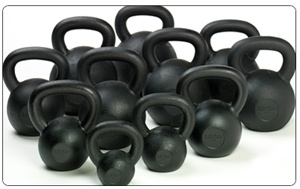August 16, 2010
Health Fads, Hormones, and Balance

By Michael D. Shaw
The cynic in me has observed—on more than one occasion—that far too much in the world of health care is a fad. Sometimes, this refers to procedures. Women of a certain age remember that at one time, it seemed like the answer to virtually any female problem was a hysterectomy. This was followed by a reaction against all hysterectomies, and is currently at the informed choice/get a second opinion stage.
Readers of this column might recall several articles we ran on infection control and sterilization issues, and how decisions in this area are dictated far more by current fashion than hard science. Many more examples could be cited.
In most cases, the benefits of the product or procedure embraced by these fads has some grain of truth, but this is expanded beyond all reason, until it is promoted as “the answer.”
Nowhere is this phenomenon more prevalent than in the world of exercise and fitness. Back in the day, it was simple enough to distinguish between strength and endurance training, and there were relatively few options in either case. But with the proliferation of health clubs and the fitness industry, a mind-boggling array of equipment and routines are now available, and each new wrinkle seems to have its passionate advocates.
I was reflecting on this the other day while I was working out in a club that is undergoing a multimillion dollar renovation. Longtime members had noted that only a few months earlier, this very same club was pleading poverty in the face of needed repairs to the physical plant, and even removed various amenities from the locker rooms. The situation changed, though, when they were faced with competition from two brand new facilities.
You can bet that the renovations will feature the very latest and greatest equipment, since apparently, using a treadmill that is two years old will give you an inferior workout. Fads, again?
One piece of equipment you don’t tend to see in too many clubs is a kettlebell, even though it probably should be a fad. What is a kettlebell? Let me quote fitness guru, advocate of living life aggressively, and Renaissance man Mike Mahler.
Imagine a black bowling ball with a suitcase handle on it and you have an idea of what a kettlebell looks like. A kettlebell is a big hunk of iron that comes in several sizes, ranging from 4 to 44 kilograms (8.8 to 97 lb) You can do standard weight training exercises with kettlebells such as bench presses, curls, and rows.
However, the unique value of kettlebells is derived from ballistic (fast exercise) work such as snatches, swings, cleans, and jerks. Also, the off centered weight of a kettlebell will force you to use more stabilizer muscles and work the targeted muscles through a longer range of motion.
I asked Mahler why kettlebells are not popular on the health club circuit. He says it is because of potential liability and cost savings.
The trend in most clubs is to have more machines and less free weights. While machines are not as effective as free weights, they are much easier to use and require minimal instruction. Thus, less of a need for highly skilled trainers. If a gym adds kettlebells they also have to pay to have their trainers educated in proper kettlebell instruction.
Mahler is a big proponent of hormone optimization, but frowns on attempting to solve the problem with hormone replacement therapy. He says that the biggest cause of hormone imbalance is lack of stress management skills. Chronic stress, as we have emphasized in previous articles, activates the secretion of potentially damaging levels of hormones, and is more than enough to cause a dangerous imbalance.
Mahler refers to people addicted to high levels of their own cortisol, enjoying the high of enhanced performance and awareness. Others attempt to manage stress with intense exercise, while not removing the actual causes of the stress (often related to their job or relationships).
As to living life aggressively, Mahler recommends a rigorous self-inventory, and is no fan of sentimentality. Indeed, he mocks the mantra of having a positive attitude…
Attitude is irrelevant. Couple the brightest of attitudes with a flawed plan and you’ll create only failure, while taking that same action with an effective plan—even if your attitude is less than cheerful—will surely succeed. Quoting former Navy SEAL Team Six leader Richard Marcinko, you do not have to like it—you just have to do it. This is the critical factor in success: Doing what needs to be done even when it’s the last thing you want to do.
Mahler also emphasizes that people are different, and there is no one perfect exercise/diet plan that will succeed for all individuals.
Fads will come and go, but we can cling to this: There is no magic bullet for fitness and health. The human body is an extraordinarily complex, self-repairing machine. Within the triumvirate of diet, exercise, and stress reduction, there are dozens if not hundreds of paths you can take. It will likely require considerable effort to find the method that works best for you.
Beware, then, of the expert who insists that he has the single answer.

